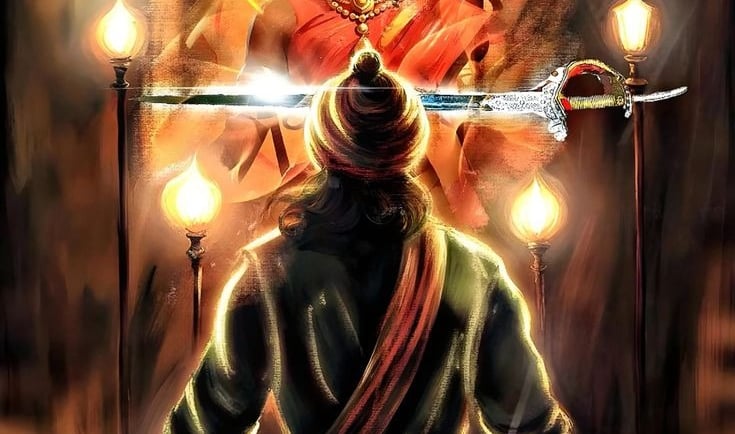Legacy of Maratha empire
The Maratha Empire (1674–1818) was a powerful Indian dynasty that rose under the leadership of Chhatrapati Shivaji Maharaj. Known for its military prowess, administrative excellence, and naval strength, the empire played a pivotal role in resisting Mughal dominance and unifying large parts of India. It emphasized swarajya (self-rule) and left a lasting legacy of cultural, political, and social influence in Indian history.
HISTORY
1/17/20253 min read


The Maratha Empire: A Saga of Valor, Betrayal, and Legacy
The Maratha Empire, one of the most formidable forces in Indian history, was born out of resilience, ambition, and a desire for self-governance. This empire, which rose to prominence in the 17th century, was not just about men and their battles; it was also about the indomitable spirit of women, internal strife, and the challenges of maintaining unity in a diverse and vast land.
The Rise of the Maratha Empire
The seeds of the Maratha Empire were sown by Shivaji Maharaj, a visionary leader born in 1630 in the hill fort of Shivneri, Maharashtra. Shivaji's rise was a response to the oppressive rule of the Mughal Empire and the Adil Shahi and Nizam Shahi Sultanates, which exploited local populations.
Key Factors in Shivaji's Rise:
1. Strategic Geography: The rugged terrain of the Western Ghats provided natural fortresses. Shivaji utilized these effectively to build an impregnable base.
2. Guerilla Warfare: Shivaji mastered "Ganimi Kava" (guerilla tactics), which involved swift, surprise attacks and quick retreats, outsmarting larger and better-equipped armies.
3. Administration: He established a well-organized administration with a focus on justice, efficient revenue collection, and the welfare of his people.
In 1674, Shivaji crowned himself as Chhatrapati (king) at Raigad Fort, laying the foundation of the Maratha Empire.
The Struggle Against the Mughals
Shivaji's rise directly challenged the dominance of the Mughal Empire, then ruled by Aurangzeb, a ruler known for his expansionist policies and religious orthodoxy. Shivaji's campaigns against the Mughals were marked by significant victories, such as the plunder of Surat in 1664 and the successful defense of his forts.
However, after Shivaji's death in 1680, the Marathas faced turbulent times. His son, Sambhaji, ascended the throne but was captured and executed by Aurangzeb in 1689. Despite this, the Marathas regrouped under the leadership of Rajaram, Tarabai, and other valiant leaders.
The Role of Women in the Maratha Empire
Maratha history is incomplete without acknowledging the contributions of its women.
1. Jijabai (Shivaji’s Mother): She played a pivotal role in shaping Shivaji's character, instilling values of courage and justice.
2. Tarabai: After the death of her husband, Rajaram, Tarabai took charge as regent for her son, Shivaji II. She led the Maratha forces against the Mughals and successfully defended the empire during a critical period.
3. Rani Lakshmibai of Jhansi (Later Era): Though not directly part of the Maratha Empire, her bravery during the 1857 revolt is often linked to the Maratha spirit.
The Maratha Confederacy and Its Expansion
The Maratha Empire reached its zenith in the early 18th century under the Peshwas, who were the prime ministers of the empire.
1. Balaji Vishwanath (1713–1720): The first Peshwa, who consolidated Maratha power by negotiating a treaty with the Mughal emperor.
2. Baji Rao I (1720–1740): Known for his military genius, Baji Rao expanded the empire across northern and central India. His campaigns were so successful that the Marathas became the dominant power in India.
3. Madhavrao I (1761–1772): He restored the Maratha power after the devastating defeat at the Third Battle of Panipat in 1761.
Internal Strife and Betrayals
Despite their military prowess, the Marathas were plagued by internal divisions and betrayals.
1. Factionalism: The empire was divided among various chiefs, such as the Scindias, Holkars, Gaekwads, and Bhonsles. This decentralization led to infighting.
2. The Third Battle of Panipat (1761): The Marathas, led by Sadashivrao Bhau, faced a catastrophic defeat against Ahmad Shah Abdali. This defeat was partly due to a lack of unity among the Maratha chiefs and betrayals by allies.
Decline of the Maratha Empire
The Maratha Empire began to weaken in the late 18th century due to several factors:
1. British Interference: The British East India Company systematically dismantled Maratha power through wars and diplomacy.
2. The Anglo-Maratha Wars (1775–1818): These wars marked the gradual subjugation of the Marathas, culminating in their defeat in the Third Anglo-Maratha War (1817–1818).
In 1818, the last Peshwa, Baji Rao II, surrendered to the British, marking the end of the Maratha Empire.
Legacy of the Maratha Empire
The Marathas left an indelible mark on Indian history.
Administrative Reforms: Their revenue system (Chauth and Sardeshmukhi) influenced later systems.
Military Tactics: The Marathas' guerrilla warfare inspired future freedom fighters.
Cultural Contributions: They patronized art, architecture, and literature, blending regional styles with Mughal influences.
Conclusion
The Maratha Empire was not just a political entity but a symbol of Indian resistance against foreign domination. It rose from the rugged hills of Maharashtra to challenge the mightiest empires of its time. Its story is one of courage, resilience, and, unfortunately, internal discord.
For a 20-year-old, understanding the Maratha Empire is crucial to grasping the complexities of Indian history. It teaches us the value of unity, the dangers of betrayal, and the importance of strong leadership. The Maratha legacy reminds us that even in the face of overwhelming odds, a determined spirit can achieve greatness.